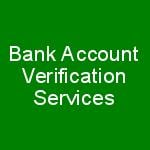 While authorization is a important aspect of the credit card sphere, the ACH realm lacks such an authorization component. When it comes to credit cards, a merchant knows they are getting paid at the point of sale because they can verify that the customer has the requisite funds on their cards at the time of payment. This reserves those funds for capture and settlement.
While authorization is a important aspect of the credit card sphere, the ACH realm lacks such an authorization component. When it comes to credit cards, a merchant knows they are getting paid at the point of sale because they can verify that the customer has the requisite funds on their cards at the time of payment. This reserves those funds for capture and settlement.
This lack of an authorization element leads some business to implement Bank Account Verification Services to reduce their risk while accepting payments. Without an ACH Verification System a business’s new customer may require significant work to obtain correct or valid checking account information.
Bank account verification also automates the NACHA 2021 requirement to Validate a Checking Account.
A Verification Process reduces the risks associated with check acceptance at the point of sale for merchants, in person or online, and validates a customer’s bank account in real-time which allows businesses to reduce payment acceptance risk.
Verification options range from negative databases and automated routing number checks to near real-time inquiries into account status and checking account balance inquiries, validating a bank account.
Bank Account Verification Services include an ATM network created data contributed by banks and Credit Unions. Daily uploads on account status are made to the network, and queries to the network can provide account insight. Check verification inquiries come with an almost immediate response. These responses can tell you:
- The account # is invalid
- The account is closed
- The account is in an NSF status: For some businesses this is important as they do they know they have a good account
- The account is non DDA eg Home Equity checks
Most third party entities that offer Bank Account Verification Services include the most basic tools: routing account number validation and negative databases. The bank routing number identifies the bank the check is drawn against. The databases holding this information can be checked in real time, and exist as a history of checking account info. Many retailers contribute data to the network, but recency is an issue because the customer’s last written check at a participating retailer is the last data point. This means that data can be out of date.
Implementing Bank Account Verification Services can dramatically reduce bad check acceptance and the workflow problems they create.


